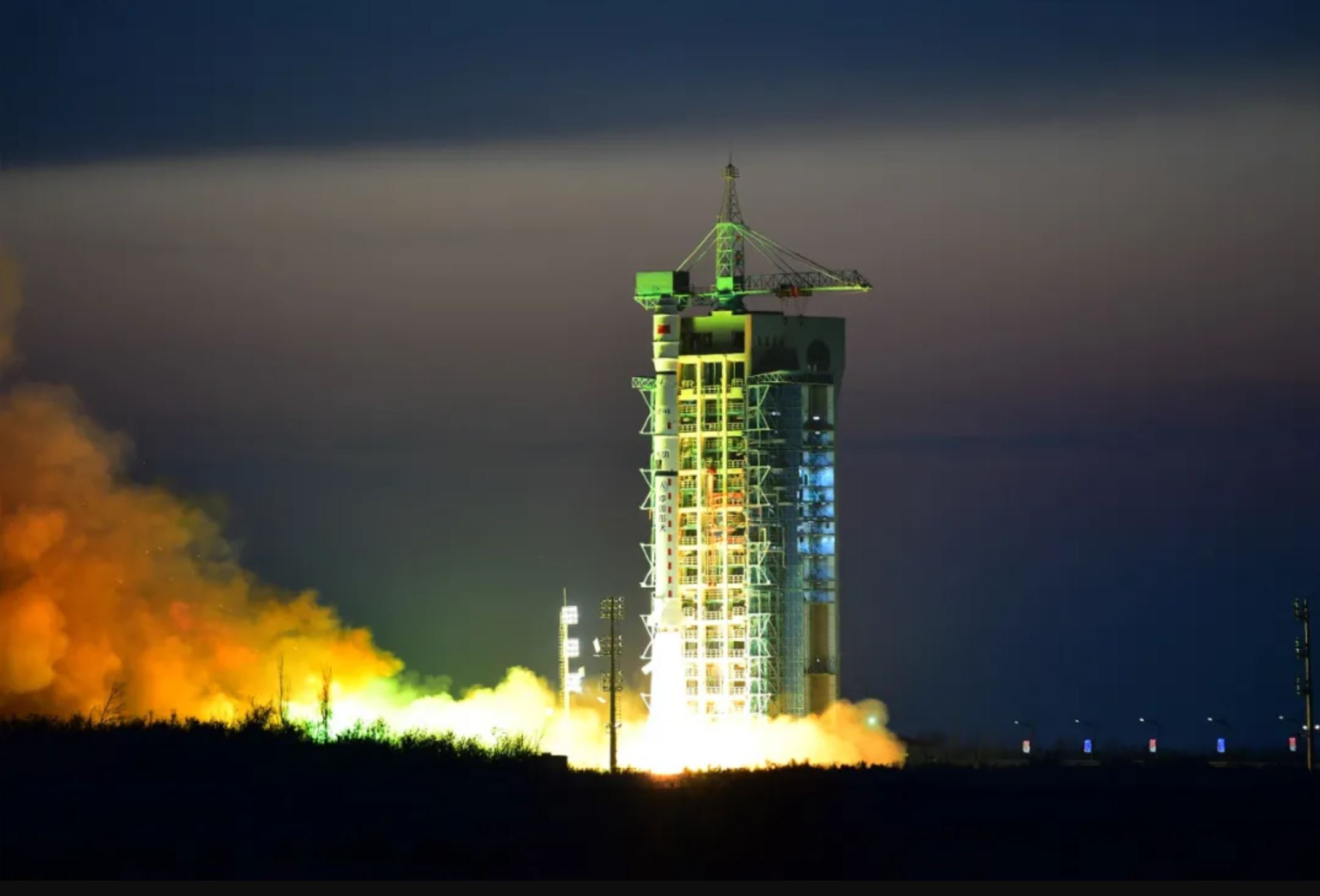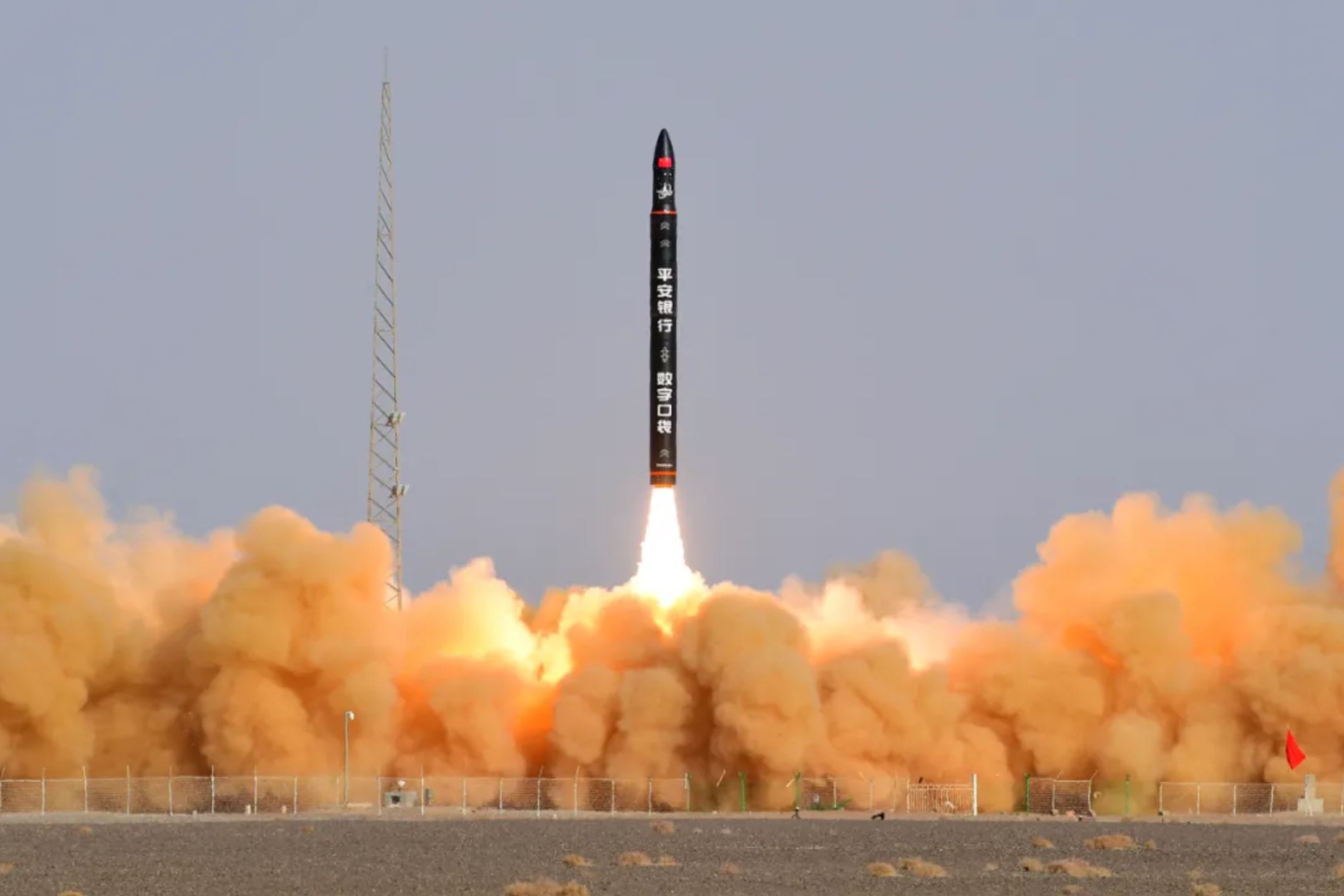China launches new Tianlian data relay satellite for space station in 50th orbital launch of 2021
China's 50th orbital launch of 2021 sent a new data relay satellite into orbit on Monday (Dec. 13) to support the country's space station and crewed missions.
A Long March 3B rocket lifted off from the Xichang Satellite Launch Center in southwest China at (1609 GMT, or 12:09 a.m. local time Dec. 14), successfully sending the Tianlian 2 (02) satellite into an orbit which will see it later arrive in a fixed position over the Earth.
The satellite's eventual geostationary orbit at an altitude 22,236 miles (35,786 kilometers) will allow it to match the rotation of the Earth and appear to stay fixed in the sky from the ground.
Related: The latest news about China's space program

It will join another Tianlian 2 satellite and five earlier first-generation Tianlian satellites to provide data relay for the Chinese Tiangong space station, Shenzhou crewed missions and other spacecraft.
The satellites make real-time communications including video possible between the ground and the Tianhe space station module, where three Shenzhou 13 astronauts are currently living and working.
The astronauts hosted a live science class in orbit last week to demonstrate experiments in microgravity to schoolchildren across China.
Get the Space.com Newsletter
Breaking space news, the latest updates on rocket launches, skywatching events and more!
The Long March 3B is China's workhorse rocket and is mainly used to launch satellites into geosynchronous orbits. It was used to build out the country's answer to GPS, the Beidou system, and has launched two lunar landing missions, Chang'e 3 and Chang'e 4.
The launch was China's 401st Long March rocket launch, 51 years after the Long March 1 launched China's first satellite, on April 24, 1970.
It followed just three days after China's 400th Long March launch. A smaller Long March 4B rocket sent a pair of classified Shijian-6 (fifth group) satellites into orbit from Jiuquan in the Gobi Desert at 7:11 p.m. EST Dec. 9, (0011 GMT Dec. 10, 8:11 a.m. local time).

State media reported that the satellites are for space environment and technology verification tests. SpaceNews reported that the satellites could be designed for signals intelligence or electronic intelligence purposes.
China's space industry celebrated the landmark launch, stating the acceleration in launch rate and improvement of overall launch capabilities in recent years.
It took 37 years to launch 100 Long March rockets, reaching that milestone in 2007. The 200th launch followed seven and a half years later, in December 2014, with the 300th launch conducted three and a half years later, in March 2019. The most recent 100 Long March launches were completed in just two years and nine months, underlining the recent, rapid increase in China's launch activities.
Prior to this, at 11:13 p.m. EST Dec. 6 (0413 GMT Dec. 7, or 12:13 p.m. local) Jiuquan also hosted a launch by private Chinese launch firm Galactic Energy. State media Xinhua reported that the Ceres-1 solid rocket successfully sent five small satellites into orbit.

SpaceNews reports that the company now plans five Ceres-1 launches in 2022 for commercial customers, and is also working on the larger, more complex Pallas-1 launch vehicle which will use liquid propulsion.
2021 has been a record-breaking year for Chinese launch activity and the Tianlian 2 (02) launch was China's 50th of the year. The country's previous record for launches inside a calendar year was 39, reached in 2018 and 2020.
Follow us on Twitter @Spacedotcom and on Facebook.
Join our Space Forums to keep talking space on the latest missions, night sky and more! And if you have a news tip, correction or comment, let us know at: community@space.com.

Andrew is a freelance space journalist with a focus on reporting on China's rapidly growing space sector. He began writing for Space.com in 2019 and writes for SpaceNews, IEEE Spectrum, National Geographic, Sky & Telescope, New Scientist and others. Andrew first caught the space bug when, as a youngster, he saw Voyager images of other worlds in our solar system for the first time. Away from space, Andrew enjoys trail running in the forests of Finland. You can follow him on Twitter @AJ_FI.









